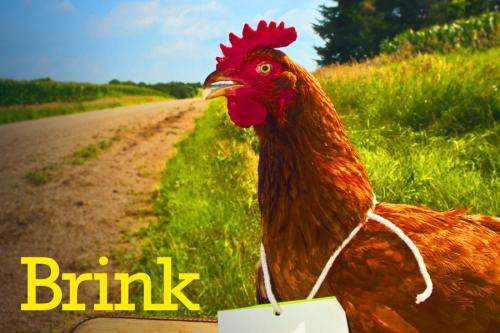Food tracking a taste of things to come

Some consumers already demand to know where their food comes from and how it's handled on the path to their plate, but growing pressures on world food production – and therefore food safety – will make those questions of increasing importance to everyone.
That's one of the issues being addressed by Pathways to Market, a multimillion-dollar research collaboration that will deliver a smorgasbord of digital information to producers, distributors and consumers here and in Asia.
The project – described by University of Technology, Sydney (UTS) Distinguished Research Professor Jordan Louviere as "an ambitious combination of cutting-edge science and marketing research" – could one day have consumers swiping their smartphones over packaging to discover where a food came from, who processed it and the conditions under which it was transported and stored.
In turn, real-time data collected from consumers will drive innovation by producers and processors and help distributors keep food safe and fresh.
Food traceability and verification are of increasing importance, says Ros Harvey, director of Sense-T, a partnership of the University of Tasmania, the Tasmanian Government, the CSIRO and IBM that is leading the Pathways project.
"There's growing concern throughout the world about the safety and quality of food and where it comes from," says Ms Harvey, as a rapidly expanding world population – and changing tastes – put pressure on food production.
In addition, confidence has been undermined in recent years by incidents such as the contamination of milk products that left several babies dead and tens of thousands hospitalised in China in 2008 and more recent news of horsemeat being sold as beef in Europe.
In the United States, the federal government has responded by requiring importers meet the same food standards as local producers.
The Pathways project – which has secured $10 million in funding for five years – will collect real-time data about the conditions under which food is produced, processed, transported, stored and sold.
This will involve the development of low-cost sensors that can be embedded in packaging to help manage food throughout the supply chain, while other researchers will work out how best to provide that data to producers, distributors and consumers.
Along with Sense-T, research and industry partners include UTS Business School's Centre for the Study of Choice (CenSoC), of which Professor Louviere is Director, the Tasmanian Farmers and Graziers Association, Australia's biggest dairy producer, the Van Diemen's Land Company, the Vale Institute of Technology in Brazil, the World Bank, and universities in Singapore, China and Japan.
The project grew out of work Sense-T has been doing with Tasmanian food producers that involves collecting real-time data about production using sensors. The program is even developing tiny sensors that can be attached to foods such as oysters (which have a heartbeat that can be monitored), to collect information to help optimise production.
It became clear the next step would be to help producers capitalise on this work in their marketing to customers locally and overseas.
Initially, Pathways will focus on two food products, tracking them along the supply chain and into Asia and the US, Ms Harvey says. The products are being finalised with industry partners but one will be a high-value, low-volume item, such as premium beef or seafood, while the other will be a low-value, high-volume product, such as milk powder.
CenSoC's job will be to delve into what consumers, here and overseas, want to know about their food, with the results likely to differ depending on whether a product is high or low value.
"We'll look at what consumers care about when it comes to those two types of product and therefore what price they're prepared to pay," says Professor Louviere.
"The consumer will gain an enormous amount of information up and down the supply chain, from the field and ocean to the store: who produced this food, under what conditions, where it came from, how it travelled all along the way – was it stored properly, was it kept at the optimal temperature?
"Our role is to understand what information is of most interest to the end consumer and how much difference that information makes to the consumer – so, what consumers would be willing to pay not only for the food but also in consideration for the information about the food.
"Producers and retailers need to understand how consumers' shopping choices are influenced by this information," says Professor Louviere.
CenSoC's work will also help determine at what point the sensor technology is economically viable for producers and processors. At the right price, he foresees significant demand, across all sorts of products.
Ms Harvey of Sense-T says: "Accurate data is the currency of the digital economy, and real-time data is the king of data."
Provided by University of Technology, Sydney

















